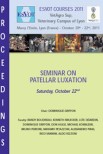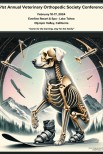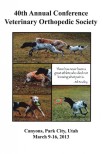It is well-established that hip joint laxity is the primary cause of degenerative changes in canine hip dysplasia, although some fundamental characteristics of stress radiography are still scarce, especially regarding the appropriate applied force.
The objective of this study was to validate the recently published force-laxity relationship from a cadaver study and to determine the force necessary to measure a sufficient proportion of laxity present in coxofemoral joints in sedated dogs.
Twenty-one dogs (10 Beagles and 11 Labrador Retrievers) underwent a radiographic protocol, including stress radiographs with increasing force, using the Vezzoni Modified Badertscher Distension-measuring Device. The Laxity Index (LI) and osteoarthritis (OA) were scored.The force-laxity curves and the maximal Laxity Index (LImax) were not significantly influenced by OA, gender or side. Weight was significantly associated with LImax and the force-laxity curves. Ninety per cent of hip joints achieved sufficient laxity at a force of 80.45 N, which is practically achievable and less than that in cadavers. Bias due to low LImax in the Labrador Retriever group and the only presence of radiographic signs of mild OA in the Beagle group should be considered.
This study confirmed the relation between applied force and LI, the robustness of this stress radiography technique and the use of a minimum 80.45 N of measured force to reach sufficient LI. Future studies with inclusion criteria regarding a broad LImax range and OA scores should be conducted.









